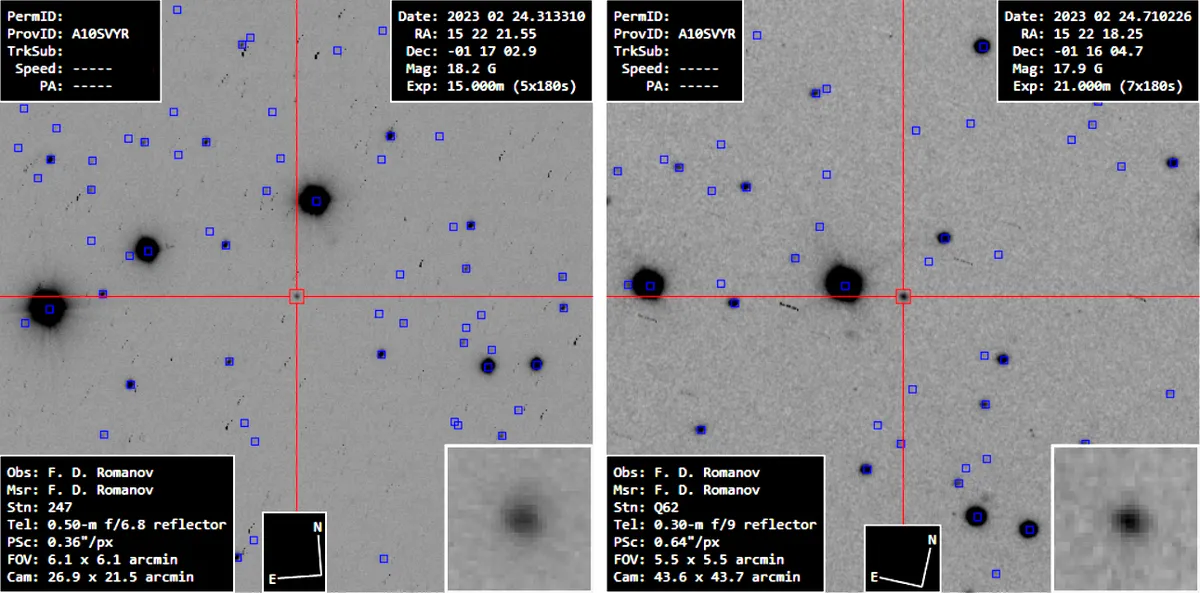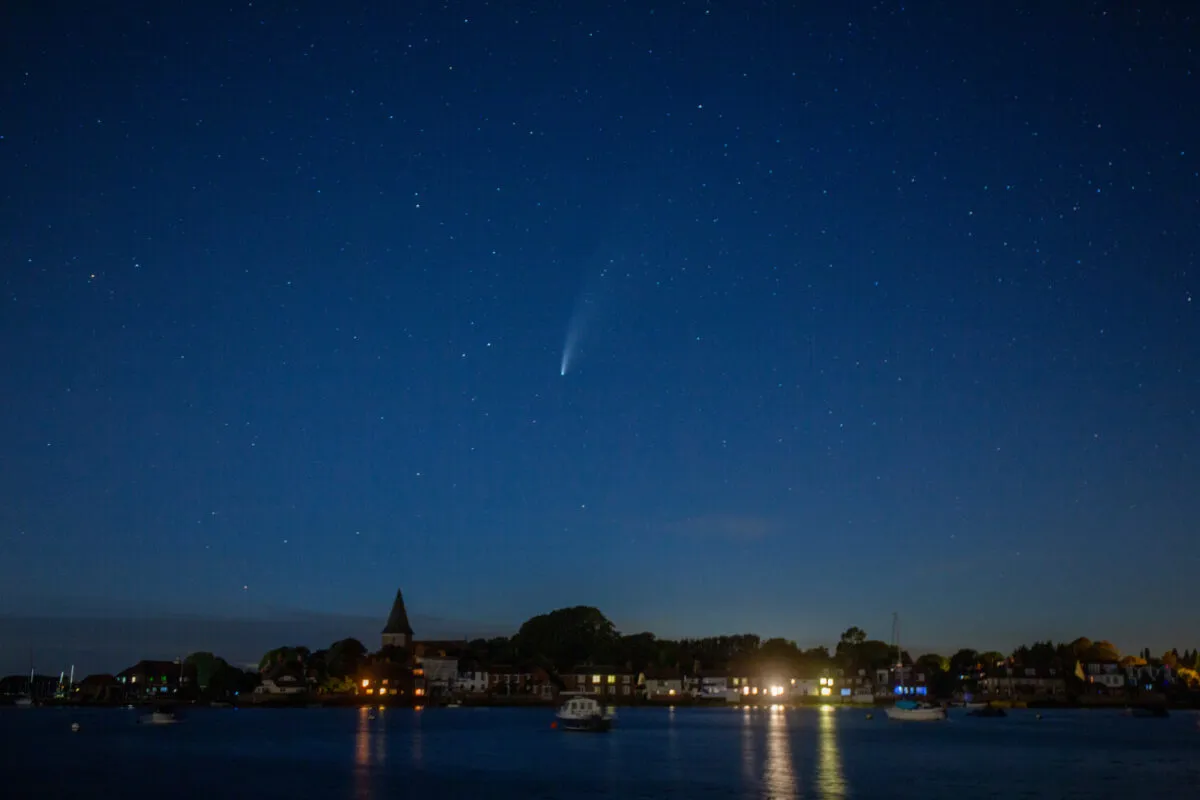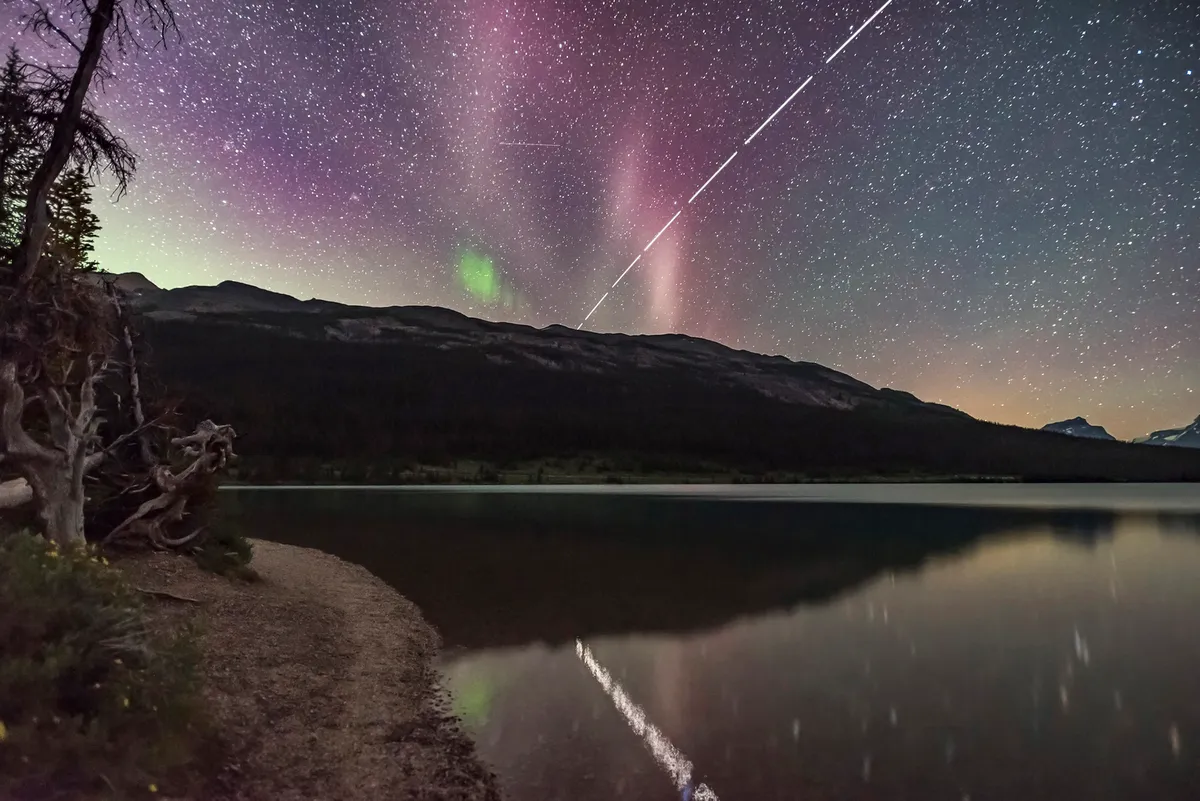Unless you've been on a hiking holiday in Outer Mongolia for the past year you've probably heard that there's going to be a "bright comet" in the sky next month. It's everywhere!
It's called comet C/2023 A3 (Tsuchinshan-ATLAS), and you're likely to be hearing a lot about it over the coming weeks.
Already you can't go on social media without seeing half a dozen news stories announcing "the comet of the century is coming!" illustrated with an AI-generated graphic showing a brilliant ball of light with a glowing tail stretched out behind it.
Find out more about Comet C/2023 A3 in November and how to photograph Comet C/2023 A3

The comet is already a celebrity, a celestial Kardashian - and it's still weeks away from being at its best, whatever its best turns out to be.
But if you're not 'into', astronomy a lot of the coverage is very confusing, full of words so weird and wonderful they could be spells written in a big dusty book hidden under Harry Potter's bed.
So, if you aren't an amateur astronomer and your knowledge of the night sky doesn't go beyond the Big Dipper, if you haven't got a telescope or even a pair of binoculars, if seeing or hearing terms like perihelion, eccentricity and magnitude makes you feel like a dog trying to read War and Peace, in Mandarin, then this is for you.
This 'beginner's guide' to Comet C/2023 A3 is a jargon-free zone. There will be no equations, no graphs, no boffin-speak.
It’s simply going to answer three basic questions.
What is this comet everyone is talking about?
Why is everyone so excited by it?
And what are we actually going to see in the sky next month?
Let’s start by looking at what comets are.
See the best images of comet C/2023 A3 Tsuchinshan-ATLAS

Comets simply explained
Comets are small objects that orbit the Sun a bit like miniature planet.
Unlike rocky asteroids, which you’ll have seen daring space pilots ducking and weaving around in countless sci-fi films, comets are icy bodies.
Imagine plucking a huge iceberg out of the sea off Antarctica, rolling it around in dust and grit and then flinging it into space into orbit around the Sun, and that’ll give you a pretty good idea of what a comet is.
There are many thousands of comets orbiting the Sun, but most of them never come anywhere near it.
They spend their entire existence out in the dark, dead and frozen, drifting through space undetected and unseen.
But sometimes a comet falls in towards the Sun, and that’s when they can become visible from Earth.
As they warm-up they thaw out, and the gas and dust trapped within their ice is released, forming a misty cloud around them.

If this cloud is big enough it can reflect enough sunlight to make the comet visible from Earth, but only through telescopes, and even then only as a smudgy, out-of-focus star.
And for most comets that’s all that’s as exciting as life ever gets.
They curve around the Sun at great distance, puff off just enough gas and dust to bring them to the attention of a few astronomers, and then return to the darkness.
But some comets come close enough to the Sun that they really turn on and develop something else too – a tail.
In fact, they can develop two tails, a curved one made out of dust and another straighter one made of gas.

The dust trails behind the comet, marking its orbit, while the gas is blown directly away from the comet by the particles blowing away from the Sun.
Again, most comets that do this do not become visible to the naked eye.
They look beautiful on photos taken through telescopes, but they never become big or bright enough to see without a telescope or pair of binoculars.
The comet then sweeps around the Sun before heading back out to the depths of space, to slow down and freeze again, going into a kind of suspended animation before years, decades, centuries or even millennia later, it reaches the farthest point of its orbit and, like a rollercoaster car reaching the top of its track, begins to fall back towards the Sun again.
And repeat, for a few billion years…

Why all the fuss about Comet C/2023 A3?
So what makes this comet – Comet C/2023 A3 – so special, and why is everyone so excited about it?
When the comet was discovered last year and astronomers calculated its orbit, their eyebrows shot up like Mr Spock spotting a new space anomaly blocking the Enterprise’s path.
It was immediately clear that the new comet was one of the few discovered every few years with the potential to become visible to the naked eye.
But it was even better than that.
The comet had every chance of becoming very bright, perhaps the brightest comet for many years, perhaps so bright that even non-astronomers with no knowledge of the night sky would be able to go out and find it straight away, simply by looking up.
Crunching the numbers further, the excited astronomers calculated that in October 2024 the comet might briefly become so bright that it might be visible in the daytime, and then might shine brightly in the evening sky as it passed Earth before fading away again.

But they were very careful to stress that none of that was guaranteed; there was always a chance the comet might fizzle out like a damp firework, as other promising comets have done in the past (Comet C/2012 S1 being a prime example).
Of course, when the media got hold of the story they ignored all those caveats and declared that the Comet of the Century was on the way, and would “light up the sky” and “dazzle skywatchers with its beauty” when it passed Earth.
It will become visible again in the Northern Hemisphere at the end of September, and that’s why so many people are getting so excited about this comet.
They’re expecting that we’re just a few weeks away from standing in our gardens, looking up and seeing the brightest comet for a generation painted on the sky.
But is that really going to happen?
Well, without poking fate in the eye with a telescope, it’s looking… promising.

What's the latest?
For a while back in the summer there were concerns in some quarters that Comet C/2023 A3 wasn’t brightening in line with predictions, which would have meant it was not going to become bright enough to see without binoculars, perhaps even a telescope.
Some comet observers were suggesting Comet A3 was showing signs of disintegrating, which would have meant we’d see nothing at all.
As the debate raged, the comet was lost in the Sun’s glare and all we could do was wait, hoping that when it emerged from that glare it would still be in one piece…
Over the past week, eagle-eyed observers in the southern hemisphere have recovered Comet C/2023 A3 and the good news is that not only is it still in one piece, it’s looking very healthy indeed.
It’s brighter than predicted – though not quite bright enough to see with the naked eye in the morning twilight - and has grown two tails.
As long as it doesn’t fall apart as it sweeps around the Sun – which is still possible but looking less and less likely every day – it looks like we will have a naked-eye comet in the northern sky next month.

What will Comet C/2023 A3 actually look like?
If you’re expecting to see something like the flaming fireball shown in those previously mentioned garish AI illustrations you’re going to be disappointed. Comet C/2023 A3 won’t look anything like that.
There’s a huge and very basic misconception about what comets look like: they don’t look anything like shooting stars.
So why do so many people think they do?
Before people began taking photos of the heavens, artists used to draw and paint the night sky very fancifully, and many used a lot of artistic licence when depicting comets.

They showed them as bright shooting stars, trailing smoke and flame, with long tails stretched out behind them like pennants fluttering from the towers of fantasy castles, so that’s what people expected them to look like for real.
If it becomes as bright as we’re hoping, Comet A3 will actually look like either a short section of an airplane contrail in the sky, perhaps as long as your index finger, or a little longer, or it will look like a misty shuttlecock, greyish-white in colour.
Its head will not look like a bright pointy star plucked from the top of a Christmas Tree, and its tail will not be sprayed across half the sky, like the comets in those old illustrations.
There’s another huge misconception too: comets don’t streak across the sky like shooting stars, trailing smoke and flame.
Depending on how close it comes to Earth, a comet can take days, weeks or even months to cross the sky, moving by only a small amount each day.
So as you look at Comet A3 in the sky you won’t see it moving like an airplane or the Space Station.
You’ll only notice it has moved in relation to the stars around it if you follow it over several hours or evenings.

How bright will it get?
So how bright will Comet C/2023 A3 get? The honest but frustrating answer is we don’t know, not for sure anyway.
The comet has now been observed so much that we have a very clear picture of how big and how active it is, but we simply can’t predict with any accuracy how bright it will get in the sky. There are just too many variables.
The best we can say is that right now, based on how it looks, Comet A3 should be bright enough to see clearly with the naked eye at its best.
Our best views will come in mid-October, when it’s shining in the evening sky to the left of the curved handle of the Big Dipper.
Before then we might see it very low in the east before sunrise during the final few days of September, but more likely we’ll have to wait until it moves up into the evening sky.
So that’s it, your jargon-free guide to Comet C/2023 A3 (Tsuchinshan-ATLAS).
All we can do now is wait. And cross our fingers.
We might be about to see something very special, perhaps even something amazing, but there’s no guarantee, despite what you might read elsewhere online.
Read more about Comet C/2023 A3's orbit, and whether it will ever return to Earth
If you get a good look at Comet C/2023 A3, or even capture a photograph of it, get in touch by emailing contactus@skyatnightmagazine.com
